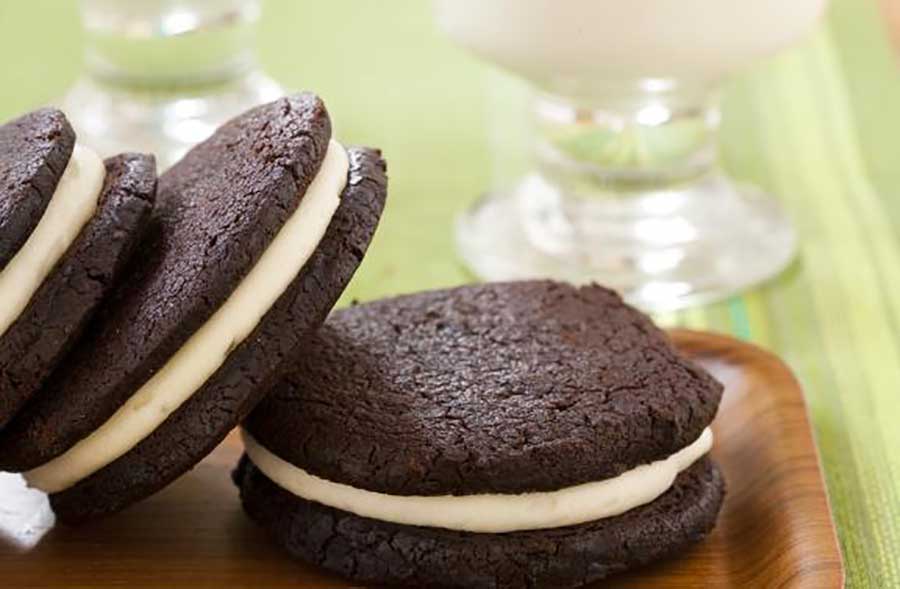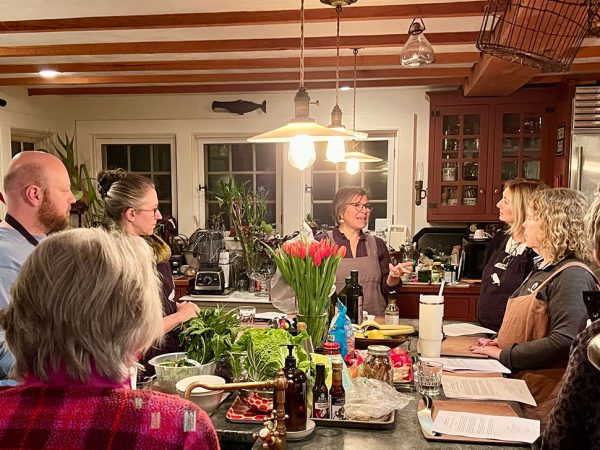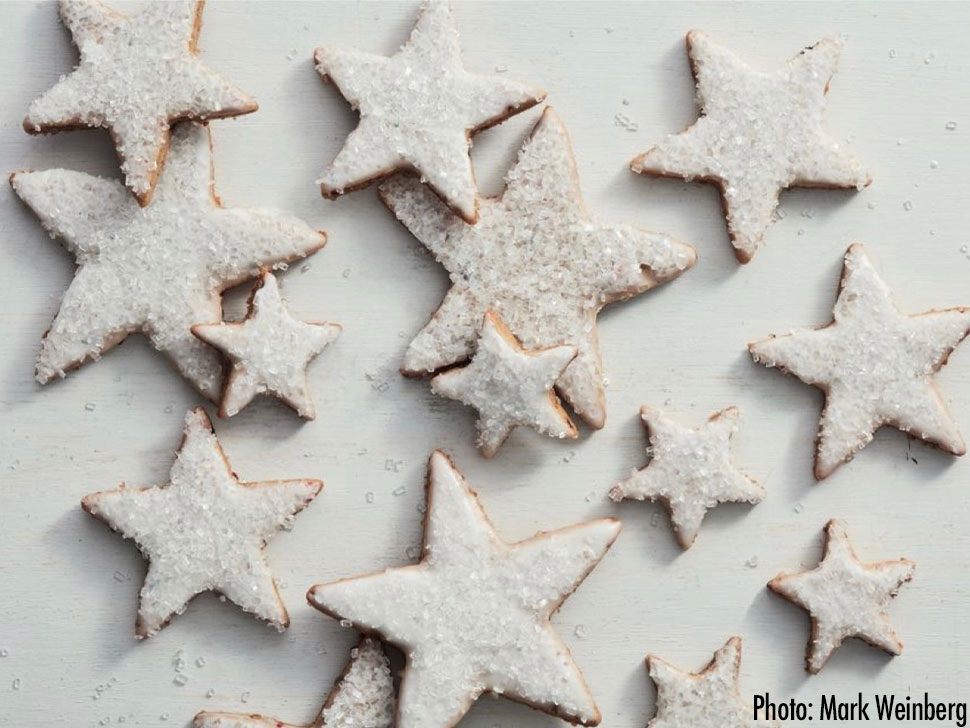Flour Bakery’s Homemade Oreos

Flour Bakery’s Homemade Oreos
By Joanne Chang
Makes 16 to 18 sandwich cookies
Oreos used to be a mystery to me. The debates about splitting them and eating the filling first, eating them whole, or dunking them—none of it made any sense. My mom never bought commercial sweets, and she certainly never bought the almost-black cookies that looked burnt to her. For the same reason, they never appealed to me either—until one day when I finally bit into one at a friend’s house. Wow. I tried to convince my mom that they were fantastic and that we really, really needed to buy them for after-school snacking. She refused, only saying that they looked too black to be good. Years later, I created my own version of an Oreo, made with real chocolate and bittersweet cocoa and filled with a creamy mixture of sugar, butter, and a little vanilla. It’s a decidedly grown-up version of the treat I fleetingly remember. And it’s delicious. Flour customers go crazy for them. At first, they expect a very sweet, vaguely chocolaty treat. Instead, they get an intense, rich chocolate cookie with a buttery vanilla cream filling—an Oreo like no other. Even Mom approves. When she visits, she always requests them for the care package I send home with her.
1 cup (2 sticks/228 grams) unsalted butter, melted and cooled slightly
3/4 cup (150 grams) granulated sugar
1 teaspoon vanilla extract
1 cup (200 grams) semisweet chocolate chips, melted and cooled slightly
1 egg
11/2 cups (210 grams) unbleached all-purpose flour
3/4 cup (90 grams) Dutch-processed cocoa powder
1 teaspoon kosher salt
1/2 teaspoon baking soda
Vanilla Cream Filling
1/2 cup (1 stick/114 grams) unsalted butter, softened
12/3 cups (230 grams) confectioners’ sugar
1 teaspoon vanilla extract
1 tablespoon milk
Pinch of kosher salt
In a medium bowl, whisk together the butter and granulated sugar until well combined. Whisk in the vanilla and chocolate. Add the egg and whisk until thoroughly incorporated.
In another medium bowl, stir together the flour, cocoa powder, salt, and baking soda until well mixed. Using a wooden spoon, stir the flour mixture into the chocolate mixture. The dough will start to seem too floury, and you will find it easiest to switch to mixing it with your hands until it comes together. It will have the consistency of Play-Doh. Let the dough sit at room temperature for about 1 hour to firm up.
Transfer the dough to a 15-inch square sheet of parchment or waxed paper. Using your hands, shape the dough into a rough log about 10 inches long and 21/2 inches in diameter. Place the log at the edge of the sheet of parchment paper, and roll the parchment around the log. With the log fully encased in parchment, roll it into a smoother log, keeping it at 21/2 inches in diameter. Refrigerate for at least 2 hours, or until firm. The log may settle and sink a bit in the fridge, so reroll it every 15 minutes or so to maintain a nice round log, if you like. If not, your cookies will be more oblong than round, which is not a bad thing taste-wise, though they won’t look like the famous packaged cookie. (At this point, the dough log can be well wrapped in plastic wrap and stored in the refrigerator for up to 1 week or in the freezer for up to 1 month. If the dough is frozen, thaw overnight in the refrigerator before proceeding.)
Position a rack in the center of the oven, and heat the oven to 325 degrees. Line a baking sheet with parchment paper or butter it.
Cut the dough log into 1/4-inch-thick slices. Place the slices about 1 inch apart on the prepared baking sheet.
Bake for 20 to 25 minutes, or until the cookies are firm to the touch. Check them frequently after 16 or 17 minutes, poking them in the middle. As soon as they feel firm to the touch, remove them from the oven. You can’t judge by color because they start out black. Let cool on the baking sheet on a wire rack to warm or room temperature. They don’t have to cool completely before you fill them, but you can’t fill them while they are hot.
While the cookies are cooling, make the frosting. Using a stand mixer fitted with the paddle attachment (or a handheld mixer), beat the butter on low speed for about 30 seconds, or until completely smooth and soft. Add the confectioners’ sugar and vanilla and beat until the mixture is perfectly smooth. Add the milk and salt and again beat until smooth. It will look like white spackle and feel about the same—like putty. You can also mix this frosting by hand. Make sure the butter is very soft, and use your hands to mix and knead the confectioners’ sugar into the butter. You should have about 1 cup. (The filling can be stored in an airtight container at room temperature for up to 2 days or in the refrigerator for up to 2 weeks. Bring to room temperature before using.)
Scoop about 1 rounded tablespoon of the filling onto the bottom of 1 cookie. Top with a second cookie, bottom side down, then press the cookies together to spread the filling toward the edges. Repeat until all of the cookies are filled.








